Description
The instruction for medical use
of Nortivan® medicine
the Trade name
of Nortivan®
the International unlicensed
name Valsartan Lekarstvennaya
the Tablet form, film coated, 40 mg, 80 mg, 160 mg
Structure
One tablet contains
active agent – valsartan 40 mg, 80 mg, 160 mg respectively,
excipients: microcrystalline cellulose, krospovidon, silicon dioxide colloidal anhydrous, magnesium stearate,
structure of a film cover: Opadray TAN 03B34653 (a gipromelloza 6 sr, the titan dioxide (E171), a macrogoal 400, talc, gland (III) oxide yellow (E 172), gland (III) oxide red (E 172), gland (III) oxide black (E 172)) (for a dosage of 40 mg).
Opadray PINK 03B34654 (a gipromelloza 6 sr, the titan dioxide (E171), a macrogoal 400, talc, gland (III) oxide yellow (E 172), gland (III) oxide red (E 172)) (for dosages of 80 mg, 160 mg).
The description
of the Tablet of round shape, with a biconvex surface, film coated, light brown color, with C73 engraving on one party and risky – on another, with a diameter of 8 mm (for a dosage of 40 mg).
Tablets of oblong shape, with a biconvex surface, film coated, peach color, with C74 engraving on one party and risky – on another, 15 mm long and 6 mm wide (for a dosage of 80 mg).
Tablets of oblong shape, with a biconvex surface, film coated, peach color, with C75 engraving on one party and risky – on another, 18 mm long and 8 mm wide (for a dosage of 160 mg).
Pharmacotherapeutic group
the Drugs influencing a system renin-angiotensin. Angiotensin II antagonists. Valsartan.
The ATX C09CA03 code
the Pharmacological
Pharmacokinetics Absorption Later properties of reception of a valsartan inside, the maximum concentration of a valsartan in blood plasma are reached within 2-4 hours in case of use of tablets and 1-2 hours at solution use. The average absolute bioavailability is 23% and 39% for tablets and solution respectively. Meal reduces exposure of a valsartan (according to AUC) approximately for 40% and the maximum concentration of drug in blood plasma (Cmax) approximately for 50%, however, in 8 hours after administration of drug of concentration of a valsartan in blood plasma were similar in groups of the examinees taking the drug after consumption of food and on an empty stomach. The observed decrease in AUC was not followed by clinically significant reduction of therapeutic effect therefore valsartan it is possible to accept irrespective of meal.
Distribution
the Equilibrium volume of distribution of a valsartan after intravenous administration makes about 17 liters that indicates lack of wide distribution of drug in fabrics. Valsartan has high affinity to proteins of blood plasma (94-97%), generally to albumine.
Biotransformation
Valsartan does not undergo intensive biotransformation as about 20% of a dose of drug come to light in the form of metabolites. In blood plasma the hydroxymetabolite in low concentration (less than 10% of AUC of a valsartan) was allocated. This metabolite has no pharmacological activity.
Removal
the multiexponential kinetics of attenuation is characteristic Of a valsartan (t1/2α & lt, 1 h and t1/2β about 9 h). Valsartan is mainly brought with bile (about 83% of a dose) and kidneys (about 13% of a dose), generally in an invariable look. After intravenous administration the clearance of a valsartan in blood plasma is about 2 l/h, and the renal clearance is 0.62 l/h (about 30% of the general clearance). Elimination half-life of a valsartan makes 6 h.
Patients with heart failure
At patients with heart failure have an average time to the maximum concentration and elimination half-life of a valsartan are similar to that at healthy examinees. AUC and Cmax values of a valsartan are almost proportional to increase in a dose in the clinical range of doses (from 40 to 160 mg two times a day). The coefficient of cumulation makes about 1.7. The visible clearance of a valsartan after intake is about 4.5 l/h. The age of patients with heart failure did not affect visible clearance of drug.
Use in special populations of patients
Patients of advanced age
At a number of patients of advanced age the system exposure of a valsartan was slightly higher, than at young patients, however, these data are not clinically significant.
The Correlation renal failure between function of kidneys and system exposure of a valsartan was not revealed that is expected for connection which renal clearance is only 30% of the general clearance of blood plasma. Therefore at treatment of patients with a renal failure (clearance of creatinine & gt, 10 ml/min.) of dose adjustment of drug it is not required. Now experience of safe use of drug for treatment of patients with clearance of creatinine & lt, 10 ml/min., or being on dialysis no therefore in these groups of patients it is recommended to be careful at treatment valsartany. Valsartan has high affinity to proteins of blood plasma, and is not brought by means of dialysis.
The abnormal liver function
About 70% of the absorbed dose is removed with bile, generally in an invariable look. Valsartan does not undergo significant biotransformation. At patients with a weak and moderate abnormal liver function the increase in exposure twice (AUC), in comparison with healthy examinees was observed. However, correlations between concentration of a valsartan in blood plasma and degree of an abnormal liver function it was not revealed. Use of Nortivana® for treatment of patients with a heavy abnormal liver function was not investigated.
Use in pediatrics
In a research with participation of 26 patients with arterial hypertension (aged from 1 up to 16 years) after single administration of suspension of a valsartan (an average: 0.9 – 2 mg/kg, the maximum dose of 80 mg), the clearance (l/h/kg) of a valsartan was comparable in all age range from 1 to 16 years, and was similar to clearance at adult patients to whom the same dosage form of drug was entered.
The pharmacodynamics
Valsartan is an effective and specific antagonist of receptors of angiotensin II at intake. It has selection effect on AT1 subtype of receptors which are responsible for the known effects of angiotensin II. Increase in concentration of angiotensin II after inhibition of receptors of AT1 valsartany can stimulate not blocked AT2 subtype receptors which, apparently, neutralize effect of receptors of AT1 in blood plasma. Valsartan does not possess partial agonistic action concerning receptors of AT1 and possesses higher (approximately by 20.000 times) affinity to AT1 receptors, than to AT2 receptors. Valsartan does not communicate and does not inhibit the receptors of other hormones or ion channels participating in regulation of cardiovascular function.
Valsartan does not inhibit APF (also known as a kinase of II) which turns angiotensin I into angiotensin II and destroys bradykinin. Due to the lack of influence on APF, potentiation of effects of bradykinin and substance P is absent therefore at reception of antagonists of angiotensin II the development of dry cough is improbable. In clinical trials in which comparison of a valsartan and APF inhibitors was carried out the frequency of dry cough was much lower (p & lt, 0.05) in group of the patients receiving valsartan in comparison with the patients receiving APF inhibitors (2.6% in comparison with 7.9% respectively). In clinical trials with participation of patients with dry cough against the background of therapy by APF inhibitors in the anamnesis, cough was registered at 19.5% of the patients receiving valsartan and at 19.0% of the patients receiving thiazide diuretics in comparison with 68.5% of patients in group of APF inhibitor (p & lt, 0.05).
Treatment of patients with arterial hypertension by Nortivan led to a lowering of arterial pressure in the absence of influence on pulse rate. Sharp cancellation of a valsartan did not lead to ricochet arterial hypertension or other undesirable phenomena.
Indications
– arterial hypertension:
treatment of primary arterial hypertension at adult patients and arterial hypertension at children and teenagers from 6 to 18 years
– recently postponed myocardial infarction:
treatment of adult patients with stable indicators of a hemodynamics with symptomatic heart failure or asymptomatic the proceeding systolic dysfunction of a left ventricle after postponed (from 12 hours to 10 days) a myocardial infarction
– heart failure:
treatment of symptomatic heart failure at adult patients in the presence of contraindications to prescribing of inhibitors of the angiotensin-converting enzyme (ACE) or as a part of combination therapy with APF inhibitors in the presence of contraindications to purpose of beta-blockers
the Route of administration and doses
of Nortivan® can be accepted irrespective of meal and it is necessary to wash down with water.
Arterial hypertension
the Recommended initial dose of Nortivana® makes 80 mg of 1 times a day. Hypotensive effect of drug substantially remains within 2 weeks, the maximum effect is reached within 4 weeks. At some patients with insufficient control of arterial blood pressure, it is possible to increase a dose of drug to 160 mg and, as much as possible, up to 320 mg. Нортиван® it can also be applied as a part of the combined treatment with other hypotensive drugs. These patients have an addition to the scheme of treatment of diuretics, for example, of Hydrochlorthiazidum, promotes a bigger lowering of arterial pressure.
Recently postponed myocardial infarction
At clinically stable patients treatment can be begun in 12 hours after a myocardial infarction. The initial dose makes 20 mg of a valsartan 2 times a day then it is necessary to begin titration to 40 mg, 80 mg and 160 mg two times a day within the next several weeks. For an initial dose divisible tablets are used. The target maximum dose makes 160 mg two times a day. In general, it is recommended to raise a dose so that it reached 80 mg two times a day in 2 weeks after an initiation of treatment, and target value of 160 mg 2 times a day in 3 months after an initiation of treatment, taking into account tolerance of drug the patient. In case of development of symptomatic arterial hypotension or a renal failure, it is necessary to consider the possibility of a dose decline.
Valsartan can be applied to therapy of the patients receiving other drugs for treatment of the postponed myocardial infarction, for example, of a trombolitika, acetylsalicylic acid, beta-blockers, statines and diuretics. It is not recommended to use drug in a combination with APF inhibitors.
Inspection of the patients who had a myocardial infarction surely has to include a research of function of kidneys.
Heart failure
the Recommended initial dose of Nortivana® makes 40 mg 2 times a day. It is necessary to carry out titration of a dose up to 80 mg and 160 mg a day with intervals not less than 2 weeks before achievement of the maximum dose, taking into account tolerance of drug the patient. It is necessary to consider a possibility of a dose decline of the accompanying diuretics. The maximum daily dose applied in clinical trials made 320 mg separate doses.
Valsartan can be applied as a part of combination therapy with other drugs to treatment of heart failure. However, use of a triple combination of APF inhibitor, a beta-blocker and valsartan is not recommended.
Children’s arterial hypertension
Children and teenagers aged from 6 up to 18 years
the Starting dose makes 40 mg of 1 times a day for children with body weight to 35 kg, and 80 mg of 1 times a day for children with the body weight of 35 kg or it is more. The dose should be adjusted proceeding from the answer from arterial blood pressure. The maximum doses applied in clinical trials are given in the table below.
The doses exceeding provided in the table were not studied therefore their use is not recommended.
Body weight
the Maximum doses applied in clinical trials
of ≥18 kg to & lt, 35
kg 80 mg ≥35 kg to & lt, 80
kg 160 mg ≥80 kg up to ≤160
kg 320 mg
Children and teenagers with a renal failure aged from 6 up to 18 years
At treatment of children with clearance of creatinine & gt of 30 ml/min. of dose adjustment is not required. It is necessary to control carefully function of kidneys and content of potassium in blood serum.
Children and teenagers with an abnormal liver function aged from 6 up to 18 years
there Is a limited experience of clinical use of a valsartan for treatment of children with poorly or moderate abnormal liver function. In this case the dose of a valsartan should not exceed 80 mg.
Patients of advanced age
At treatment of patients of advanced age of dose adjustment it is not required.
The renal failure
At treatment of adult patients with clearance of creatinine & gt, 10 ml/min. of dose adjustment is not required.
An abnormal liver function
At treatment of patients with poorly or moderate abnormal liver function which is not followed by a cholestasia, the dose of a valsartan should not exceed 80 mg.
Side effects
Often (1/100 to & lt, 1/10)
– dizziness, postural dizziness
– arterial hypotension, orthostatic hypotension
– a renal failure, a renal failure
Infrequently (1/1000 to & lt, 1/100)
– cough
– weakness, an asthenia, a syncope, a headache
– heart failure
– nausea, diarrhea, an abdominal pain
– a hyperpotassemia
– a Quincke’s disease
– an acute renal failure, increase in concentration of creatinine in blood serum
Is unknown (it is impossible to estimate frequency on the basis of the available data)
– decrease in a hemoglobin content and a hematocrit, a neutropenia, thrombocytopenia
– hypersensitivity, including orrhoreaction
– a hyponatremia
– a vasculitis
– increase in values of functional trials of a liver, including increase in content of bilirubin in blood serum
– rash, an itching
– myalgia
– increase in content of urea nitrogen of blood
of the Contraindication
– hypersensitivity to active ingredient or any of drug excipients
– a heavy abnormal liver function, biliary cirrhosis and a cholestasia
– the accompanying use of antagonists of receptors of angiotensin II (APAII), including valsartan, or the inhibitors angiotensin of the turning enzyme (IATE) at combinations with aliskeriny at treatment of patients with diabetes or a renal failure (SKF & lt, 60 ml/min. / 1.73 sq.m)
– pregnancy and the period of a lactation
– children’s age up to 6 years
– children and teenagers aged from 6 up to 18 years:
– with a renal failure with clearance of creatinine & lt, 30 ml/min. and also the patients of children’s age receiving dialysis
– with a heavy abnormal liver function, biliary cirrhosis and with a cholestasia
– with heart failure and recently postponed myocardial infarction
Medicinal interactions
of Lities
At the combined use with APF inhibitors the reversible increase in content of lithium in blood serum and toxicity was observed. Due to the insufficient experience of simultaneous use of a valsartan and lithium, it is not recommended to use this combination of medicines. If, nevertheless, this combination is necessary, careful monitoring of content of lithium in blood serum is recommended.
The potassium-preserving diuretics, nutritional supplements containing potassium, potassium –
If the combined use of the medicine influencing the content of potassium and a valsartan is necessary potassium content in blood plasma is recommended to control the containing substitutes of table salt and other substances leading to increase in content of potassium.
To be careful at simultaneous use
Non-steroidal anti-inflammatory drugs (NPVP), including selection TsOG-2 inhibitors, acetylsalicylic acid (& gt, 3 g/days) and non-selective NPVP
At co-administration of antagonists of a receptor of angiotensin II and NPVP the decrease in hypotensive effect can be observed. Moreover, simultaneous use of antagonists of a receptor of angiotensin II and NPVP can result in the increased risk of deterioration in function of kidneys and increase in content of potassium in blood serum. Therefore it is recommended to control function of kidneys in an initiation of treatment and also to watch that the patient was rather hydrated.
Other
In researches of medicinal interactions with use of a valsartan clinically significant medicinal interactions with valsartany or any of the following drugs were not revealed: Cimetidinum, warfarin, furosemide, digoxin, atenolol, indometacin, hydrochlorothiazide, amlodipiny, glibenclamide.
Use in pediatrics
Is recommended to be careful at the combined treatment of children and teenagers with arterial hypertension at whom often pervoprichinny state is the renal failure, valsartany and other drugs inhibiting renin-angiotensin-aldosteronovuyu a system which can lead to increase in content of potassium in blood serum. Careful monitoring of function of kidneys and content of potassium in blood serum is required.
The special
indications Hyperpotassemia Simultaneous Use of drug and the dietary supplements containing potassium, kaliysberegayushchy diuretics, kaliysoderzhashchy substitutes of salt or other drugs which promote increase in content of potassium (heparin and to that similar) it is not recommended. As required it is necessary to control potassium content.
The renal failure
At the moment experience of safe use of drug for treatment of patients with clearance of creatinine & lt, 10 ml/min. and at the patients who are on dialysis is absent therefore at treatment of these groups of patients it is necessary to apply valsartan with care.
An abnormal liver function
patients Should be careful at Nortivan’s appointment with poorly or moderate abnormal liver function which is not followed by a cholestasia.
Patients with sodium exhaustion and/or dehydration
At patients with heavy sodium exhaustion and/or dehydration, for example, of the diuretics receiving high doses, in rare instances after an initiation of treatment of Nortivanom® the symptomatic arterial hypotension can develop. Prior to treatment of Nortivanom® it is necessary to take measures for treatment of sodium exhaustion and/or dehydration, for example, to lower a diuretic dose.
A stenosis of renal arteries
Safety of use of Nortivana® for treatment of patients with a bilateral stenosis of renal arteries or a stenosis of an artery of the only kidney was not established.
Short-term treatment of Нортиваном® 12 patients with renovascular arterial hypertension against the background of a unilateral renal artery stenosis did not lead to significant changes in hemodynamic indicators of a kidney, concentration of creatinine in blood serum or the blood urea nitrogen (BUN). However, patients with a unilateral renal artery stenosis have a use of other drugs which influence renin-angiotenzinovuyu a system, can lead to increase in concentration of urea nitrogen of blood and creatinine of blood serum therefore at treatment of these patients valsartany it is necessary to control function of kidneys carefully.
Transplantation of a kidney
Now data on safe use of Nortivana® for treatment of the patients who recently transferred transplantation of a kidney no.
Primary hyper aldosteronism
Patients with primary hyper aldosteronism should not appoint Nortivan® as their renin-angiotenzinovaya the system is inactive.
A stenosis of the aortal and mitral valve, a subaortic hypertrophic stenosis
As well as in a case with other vazodilatator, it is necessary to observe extra care at treatment of patients with a stenosis of the aortal or mitral valve or a hypertrophic subaortic stenosis.
Recently postponed myocardial infarction
It was shown that the combined treatment by captopril and valsartany does not give additional clinical benefits, for that increases risk of development of the undesirable phenomena, in comparison with referensny schemes of treatment. Therefore the combined treatment valsartany and APF inhibitors is not recommended.
It is necessary to be careful, beginning treatment of the patients who had a myocardial infarction. Inspection of the patients who had a myocardial infarction always has to include assessment of function of kidneys.
At the patients who had a myocardial infarction, treatment of Nortivanom® can cause some lowering of arterial pressure, however, on condition of observance of instructions for dosing, drug withdrawal because of the remaining symptomatic arterial hypotension not always is obligatory.
Heart failure
It was shown that the triple combined scheme of treatment including APF inhibitor, a beta-blocker and valsartan has no clinical advantages at treatment of patients with heart failure. This combination with high probability will lead to increase in risk of development of the undesirable phenomena therefore its use is not recommended.
It is necessary to be careful, beginning treatment of patients with heart failure. Inspection of patients with heart failure always has to include assessment of function of kidneys.
Patients with heart failure have a treatment valsartany often causes some lowering of arterial pressure, however, on condition of observance of instructions for dosing, drug withdrawal because of the remaining symptomatic arterial hypotension not always is obligatory.
Among patients at whom function of kidneys can depend on activity system renin-angiotenzinovoy (for example, at patients with heavy stagnant heart failure) the treatment by inhibitors of angiotensin-converting enzyme was connected with an oliguria and/or the progressing azotemia, and in rare instances – with an acute renal failure and/or a lethal outcome. As valsartan is an antagonist of angiotensin II, it is impossible to exclude that use of Nortivana® can be connected with a renal failure
the Quincke’s disease in the anamnesis
At the patients receiving treatment valsartany cases of development of a Quincke’s disease were registered, including the edema of laryngeal and glottis causing obstruction of airways and/or edema of face, lips, drinks and/or language at some of these patients the Quincke’s disease in response to use of other medicines took place, including APF inhibitors earlier. At patients at whom the Quincke’s disease developed it is necessary to cancel immediately treatment valsartany and not to start it over again.
Double blockade the system renin-angiotensin-aldosteronovoy (SRAA)
At susceptible patients can be observed arterial hypotension, a syncope, a stroke, a hyperpotassemia and changes of function of kidneys (including an acute renal failure), especially at the combined use of the medicines influencing this system.
It is necessary to be careful at the combined use of APAII, including valsartan, with other medicines blocking RAAS, for example, of IAPF or aliskireny.
Use in pediatrics
Is recommended to be careful at the combined treatment of children and teenagers with arterial hypertension. During treatment valsartany careful control of function of kidneys and content of potassium in blood serum is necessary. It is especially important at use of a valsartan against the background of other clinical states (the increased body temperature, dehydration) promoting a renal failure.
Pregnancy and the period of a lactation
it is not necessary to begin treatment by antagonists of receptors of angiotensin II (APAII) during pregnancy. The patients planning pregnancy should be transferred to alternative hypotensive drugs with the proved safety of use during pregnancy, except for cases when continuation of therapy of APAII is considered necessary. Use of APAII should be cancelled right after confirmation of pregnancy and if necessary to begin treatment with alternative drugs. It is known that exposure of APAII in the second and third trimester of pregnancy can cause in the person a fetotoksichnost (depression of function of kidneys, an oligoamnios, the slowed-down ossification of bones of a skull) and neonatal toxicity (renal failure, arterial hypotension, a hyperpotassemia).
In view of lack of data concerning use of a valsartan during chest feeding, it is not recommended to apply Nortivan® and it is preferable to use alternative drugs with well established safety at treatment against the background of breastfeeding, especially in case of feeding of newborns or premature babies.
Features of influence of medicine on ability to run the vehicle or potentially dangerous mechanisms
of Researches of influence on ability to drive the car it was not carried out. When driving or moving mechanisms it is necessary to take into account that in some cases dizziness or exhaustion can be observed.
Overdose
Symptoms: the profound arterial hypotension which can lead to the oppressed level of consciousness, circulator collapse and/or shock.
Treatment: depends on time of administration of drug and type and weight of symptoms, a paramount task is blood circulation stabilization. In case of arterial hypotension of the patient it is necessary to place in a dorsal decubitus and to provide correction of volume of the circulating blood.
Valsartan it is improbable to remove by means of a hemodialysis.
A form of release and packing
On 10 tablets in blister strip packaging from aluminum foil.
On 3 blister strip packagings together with the instruction for medical use in the state and Russian languages put
Storage conditions in a cardboard pack
to Store in original packing, in the dry place at a temperature not over 30 of 0C.
To store out of children’s reach!
3 years
After expiry date drug not to use a period of storage.
Prescription status
According to the prescription
the Name and the country
of the LLC Gideon Richter Polsha manufacturing organization, Poland
the Name and the country of the owner of the registration certificate
of JSC Gideon Richter,
Hungary 1103 Budapest, Dyomryoi St., 19-21, Hungary
the Address of the organization accepting in the territory of the Republic of Kazakhstan claims from consumers on quality of products: Representative office of JSC Gideon Richter in RK Almaty, Nurlybayev St. 11 Phone number: 8-(727) 258-26-22, 8-(727) 258-26-23E-mail:
To develop info@richter.kz
Additional information
| Ingredient |
|---|





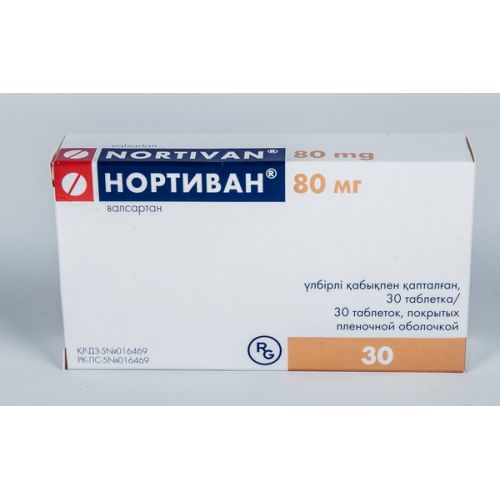

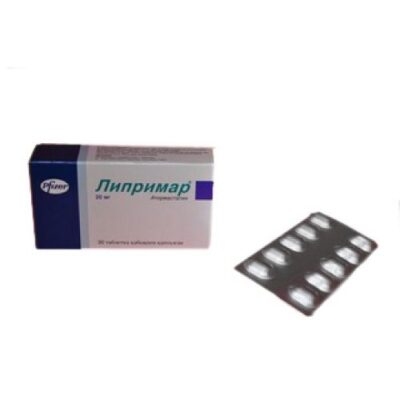
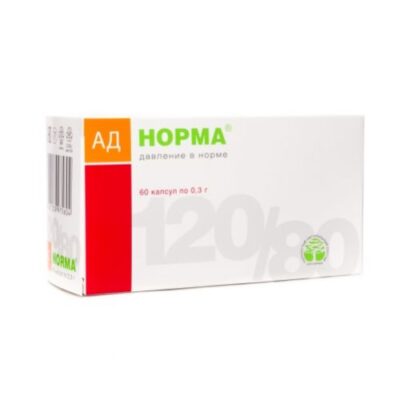
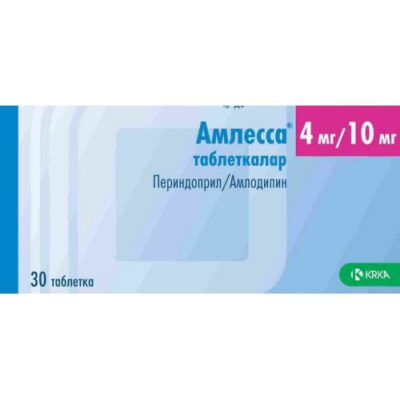
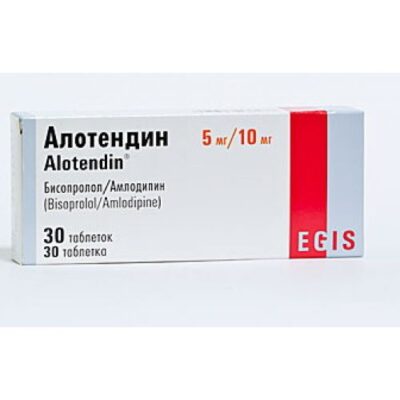
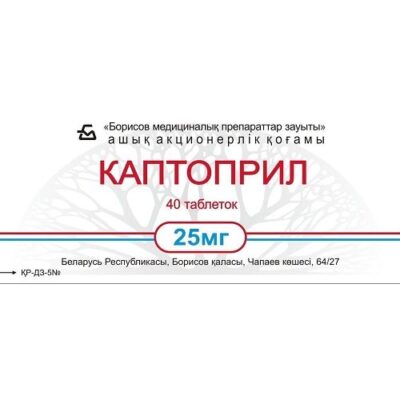
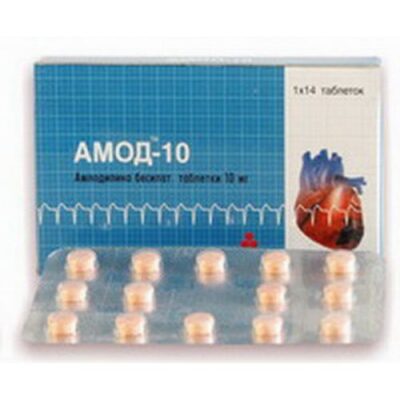
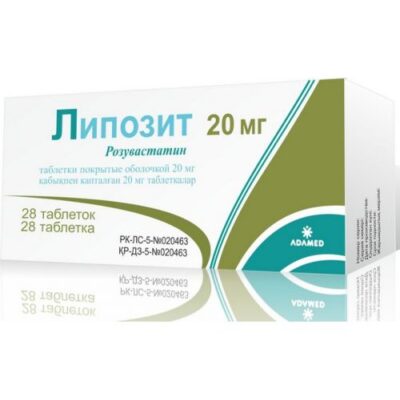
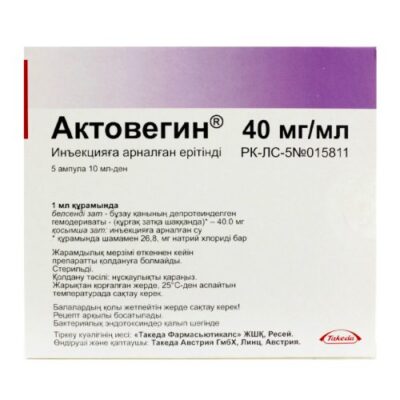
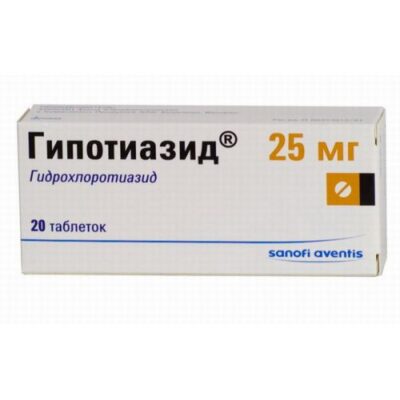






Reviews
There are no reviews yet.